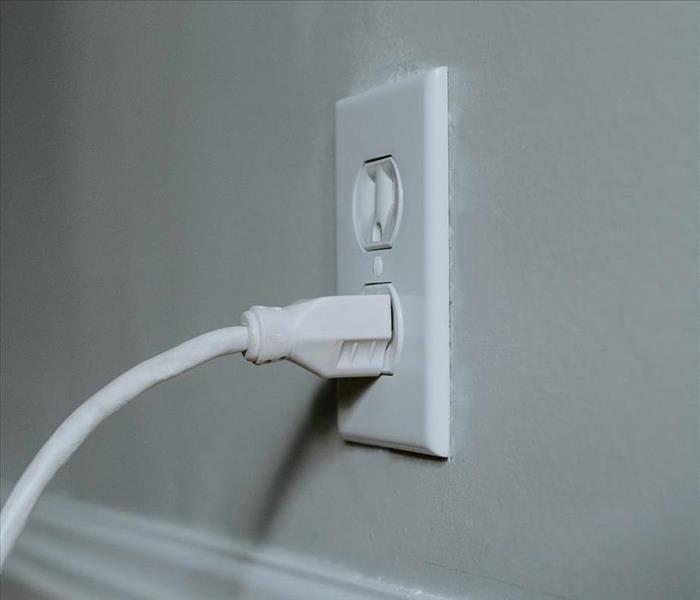Understanding Guidelines: Practicing Electrical Fire Safety
5/12/2021 (Permalink)
We’ve all been there. We’re grasping a device whose battery is on the brink of running out in one hand and a plug in the other, staring at an outlet and wondering, “Would it be safe to plug this in here?” It may be surprising to learn what kind of damage just one extra plug can do when an outlet becomes overloaded. The guidelines for electrical outlets are a bit fuzzy, which makes electrical fire safety difficult. The National Fire Protection Agency reports that from 2012 to 2016, electrical conundrums were the second most common cause for the ignition of electrical fires in homes. Therefore, it is crucial that we get to the bottom of the electrical outlet guideline debacle and understand how to best protect our homes against electrical fires.
Statistics About Electrical Fires
First, we must become aware of the most frequent instigators of residential electrical fires. FEMA published a report on Residential Building Electrical Fires in 2018, which discovered that between the years of 2014 and 2016, electrical fires served as the catalyst of most electrical fires occurring in homes. It is also important to note that receptacles and outlets were the source of 12 percent of such fires. 5 percent of electrical fires also emanated from extension cords. With this information in mind, be sure to exercise caution when handling electrical wires, cords, and outlets.
Guidelines
Outlined in the FEMA report are a large number of guidelines that relate to fire safety practices when encountering appliances, outlets, and extension cords.
Appliances
Appliances like microwaves, washing machines, and refrigerators, according to FEMA, must always be directly plugged into wall outlets. Keep an eye out for signs of damage on appliances’ wires and cords. Loosening and cracking can often lead to malfunctions and, ultimately, electrical fires.
Outlets and Extension Cords
Because they provide a quick and easy solution to the issue of having a greater ratio of cords to wall outlets, it can be tempting to overload extension cords. When extension cords are overwhelmed, however, there can be an increased risk for the ignition of an electrical fire. Usually, you can find an extension cord’s maximum capacity detailed on its packaging and be sure to never overload extension cords with more than they can handle. Internal overload protection is an important characteristic to consider when deciding what kind of extension cord to utilize. It is equally important to avoid overwhelming wall outlets with too many plugs. Be sure that you do not force three-pronged plugs into outlets that are designed for two-pronged plugs.
Where SERVPRO Can Help
We can take preventative measures to protect our homes against electrical fires, but accidents can still happen. That’s why we here at SERVPRO of Metro Pittsburgh East, we provide 24/7 Emergency Services and professional Fire Damage Restoration Services that will help you make an electrical fire “Like it never even happened.” For more information about the fire services that we provide, be sure to check out our website, which includes everything from a detailed explanation of our Fire Restoration Process to our expert Fire Damage Tips. For immediate help, call us at (412) 672-5400 and let us handle the rest.




 24/7 Emergency Service
24/7 Emergency Service
